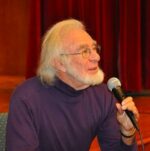Draft for a Manifesto 2025
TRANSCEND MEMBERS, 5 Aug 2024
David Adams | Transition to a Culture of Peace – TRANSCEND Media Service
1 Aug 2024 – The previous blog proposed taking up the Manifesto 2000 where it left off, renaming it the Manifesto 2025, gathering signatures once again and initiating action.
During the United Nations International Year for the Culture of Peace, 75 million people signed the Manifesto 2000, promising to work for a culture of peace and nonviolence in their daily lives.
The operative paragraphs of a proposed Manifesto 2025, 1 through 6, remain the same as those of the Manifesto 2000. They translate the eight programme areas of the international Programme of Action for a Culture of Peace, adopted by the UN in 1999, into six pledges for actions that can be taken locally by individuals and small groups.
The preambular paragraphs have been updated to stimulate reflection and discussion about what the culture of peace means for a person’s values, attitudes, traditions and modes of behaviour and ways of life.
Draft Manifesto 2025
Because I grieve for all those who suffer from violence, whether physical, economic or psychological, whether in our own community or elsewhere around the world,
and because I am outraged at a culture that consumes the states of the world with wars and preparations for war and at a mass media that searches for stories of violence, ignoring the more frequent human actions of helping and cooperation,
and because I refuse to believe that violence is inevitable, that might makes right, or that the world must be divided by enemy images into us against them,
I accept my responsibility for the wellbeing of humanity in solidarity with all those in the past, present or future who dream of and strive for a better world,
and so I pledge – in my daily life, in my family, my work, my community, my country and my region – to:
1. respect the life and dignity of every person without discrimination or prejudice;
2. practise active non-violence, rejecting violence in all its forms: physical, sexual, psychological, economical and social, in particular towards the most deprived and vulnerable such as children and adolescents;
3. share my time and material resources in a spirit of generosity to put an end to exclusion, injustice and political and economic oppression;
4. defend freedom of expression and cultural diversity, giving preference always to dialogue and listening rather than fanaticism, defamation and the rejection of others;
5. promote consumer behaviour that is responsible and development practices that respect all forms of life and preserve the balance of nature on the planet;
6. contribute to the development of my community, with the full participation of women and respect for democratic principles, in order to create together new forms of solidarity.
Join the discussion, enter your suggestions below.
_________________________________________________
 Dr. David Adams is a member of the TRANSCEND Network for Peace Development Environment and coordinator of the Culture of Peace News Network. He retired in 2001 from UNESCO where he was the Director of the Unit for the UN International Year for the Culture of Peace. Previously, at Yale and Wesleyan Universities, he was a specialist on the brain mechanisms of aggressive behavior, the history of the culture of war, and the psychology of peace activists, and he helped to develop and publicize the Seville Statement on Violence. Send him an email.
Dr. David Adams is a member of the TRANSCEND Network for Peace Development Environment and coordinator of the Culture of Peace News Network. He retired in 2001 from UNESCO where he was the Director of the Unit for the UN International Year for the Culture of Peace. Previously, at Yale and Wesleyan Universities, he was a specialist on the brain mechanisms of aggressive behavior, the history of the culture of war, and the psychology of peace activists, and he helped to develop and publicize the Seville Statement on Violence. Send him an email.
Go to Original – decade-culture-of-peace.org
DISCLAIMER: The statements, views and opinions expressed in pieces republished here are solely those of the authors and do not necessarily represent those of TMS. In accordance with title 17 U.S.C. section 107, this material is distributed without profit to those who have expressed a prior interest in receiving the included information for research and educational purposes. TMS has no affiliation whatsoever with the originator of this article nor is TMS endorsed or sponsored by the originator. “GO TO ORIGINAL” links are provided as a convenience to our readers and allow for verification of authenticity. However, as originating pages are often updated by their originating host sites, the versions posted may not match the versions our readers view when clicking the “GO TO ORIGINAL” links. This site contains copyrighted material the use of which has not always been specifically authorized by the copyright owner. We are making such material available in our efforts to advance understanding of environmental, political, human rights, economic, democracy, scientific, and social justice issues, etc. We believe this constitutes a ‘fair use’ of any such copyrighted material as provided for in section 107 of the US Copyright Law. In accordance with Title 17 U.S.C. Section 107, the material on this site is distributed without profit to those who have expressed a prior interest in receiving the included information for research and educational purposes. For more information go to: http://www.law.cornell.edu/uscode/17/107.shtml. If you wish to use copyrighted material from this site for purposes of your own that go beyond ‘fair use’, you must obtain permission from the copyright owner.